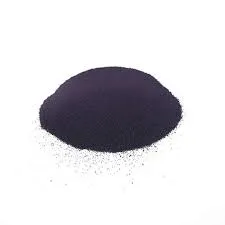Exploring the Natural Indigo Dye from Indigofera Tinctoria for Sustainable Textile Applications
Indigofera Tinctoria The Source of Nature’s Blue – An Exploration of Indigo Dye
Indigo dye, a rich and vibrant blue pigment, has captivated cultures across the globe for centuries. At the heart of this remarkable product lies the plant known as Indigofera tinctoria. Renowned for its dyeing properties, this perennial legume has played an integral role in textile dyeing practices in various civilizations, from ancient India to contemporary fashion industries.
Indigofera tinctoria, commonly referred to as indigo, thrives in tropical and subtropical climates. It is characterized by its green foliage and clusters of small purple flowers. The significance of this plant extends far beyond its aesthetic appeal; it is the source of indigo dye, an organic pigment derived from the leaves. The dye is extracted through a detailed and labor-intensive fermentation process, where the leaves are soaked in water, fermented, and then oxidized to create a deep blue liquid. Historically, this dye was highly sought after, often referred to as “blue gold,” not only for its beautiful hue but also for its remarkable ability to resist fading.
Indigofera Tinctoria The Source of Nature’s Blue – An Exploration of Indigo Dye
The birth of synthetic dyes in the late 19th century, most notably the invention of aniline dyes, threatened the traditional indigo trade. These synthetic alternatives were cheaper and easier to produce, leading to a decline in the use of natural indigo. However, the modern resurgence of interest in sustainable and eco-friendly practices has rekindled appreciation for indigo dye. As consumers become increasingly conscious of the environmental impact of synthetic dyes, the demand for natural indigo is on the rise once again.
indigofera tinctoria indigo dye product

Indigo dye offers several advantages over its synthetic counterparts. It is biodegradable, non-toxic, and produced from renewable resources. This makes it an appealing option for the eco-conscious consumer. Furthermore, while synthetic dyes can cause allergic reactions and skin sensitivities in some individuals, natural indigo is often better tolerated. Its application extends beyond textiles; indigo is now being explored in various industries like cosmetics, food, and even art, showcasing its versatility and cultural significance.
In addition to its aesthetic and functional properties, indigo dye holds symbolic meaning in many cultures. It often represents wisdom, stability, and depth, attributed to its unique hue. In parts of West Africa, indigo-dyed textiles are integral to cultural rituals and storytelling, serving as a medium of identity and heritage.
Despite the modernization of dyeing techniques, traditional methods of indigo dyeing are being preserved through artisanal practices. Numerous organizations and artisans around the world are committed to keeping these techniques alive, conducting workshops and showcasing the beauty of hand-dyed textiles. This revival not only sustains cultural heritage but also supports local communities by promoting fair trade practices.
In conclusion, Indigofera tinctoria remains a fundamental player in the world of natural dyes. Its journey from ancient artisans to modern-day sustainable fashion embodies the evolution of cultural practices and environmental consciousness. As interest in sustainable and ethically produced goods continues to grow, the legacy of indigo dye is set to thrive, weaving stories of tradition and innovation into the fabric of contemporary life.
-
The Timeless Art of Denim Indigo Dye
NewsJul.01,2025
-
The Rise of Sulfur Dyed Denim
NewsJul.01,2025
-
The Rich Revival of the Best Indigo Dye
NewsJul.01,2025
-
The Enduring Strength of Sulphur Black
NewsJul.01,2025
-
The Ancient Art of Chinese Indigo Dye
NewsJul.01,2025
-
Industry Power of Indigo
NewsJul.01,2025
-
Black Sulfur is Leading the Next Wave
NewsJul.01,2025

Sulphur Black
1.Name: sulphur black; Sulfur Black; Sulphur Black 1;
2.Structure formula:
3.Molecule formula: C6H4N2O5
4.CAS No.: 1326-82-5
5.HS code: 32041911
6.Product specification:Appearance:black phosphorus flakes; black liquid

Bromo Indigo; Vat Bromo-Indigo; C.I.Vat Blue 5
1.Name: Bromo indigo; Vat bromo-indigo; C.I.Vat blue 5;
2.Structure formula:
3.Molecule formula: C16H6Br4N2O2
4.CAS No.: 2475-31-2
5.HS code: 3204151000 6.Major usage and instruction: Be mainly used to dye cotton fabrics.

Indigo Blue Vat Blue
1.Name: indigo blue,vat blue 1,
2.Structure formula:
3.Molecule formula: C16H10N2O2
4.. CAS No.: 482-89-3
5.Molecule weight: 262.62
6.HS code: 3204151000
7.Major usage and instruction: Be mainly used to dye cotton fabrics.

